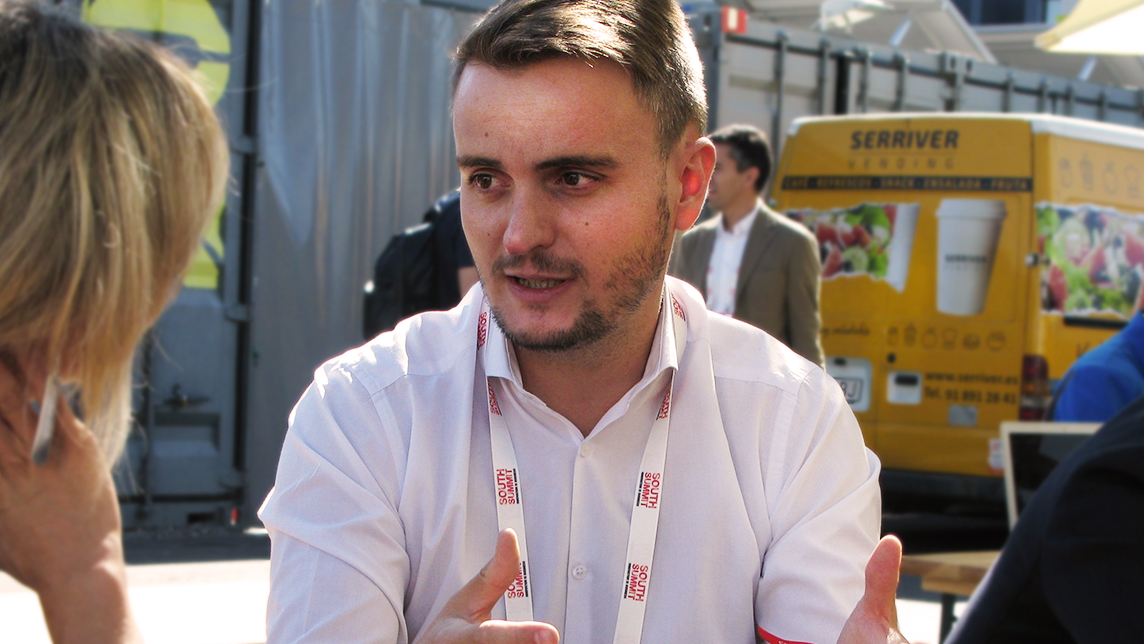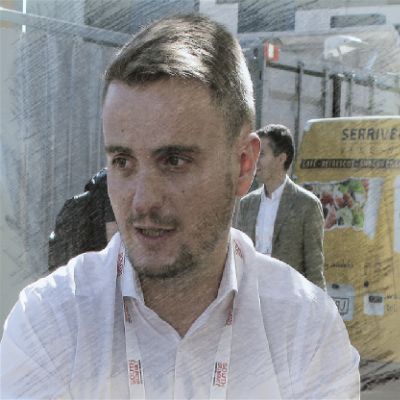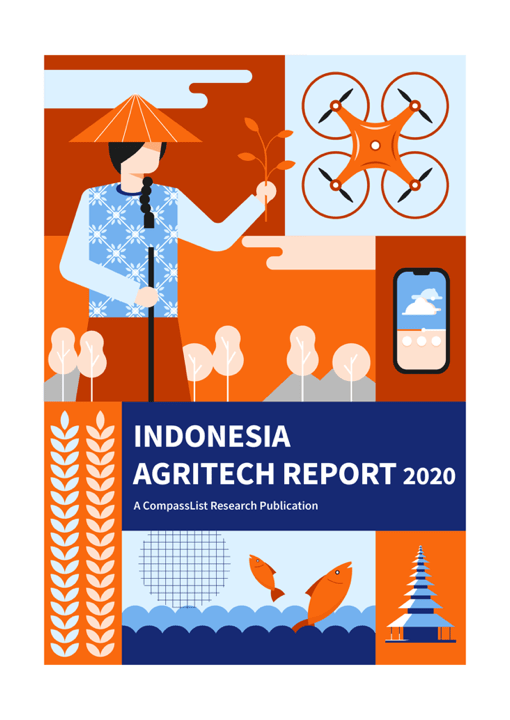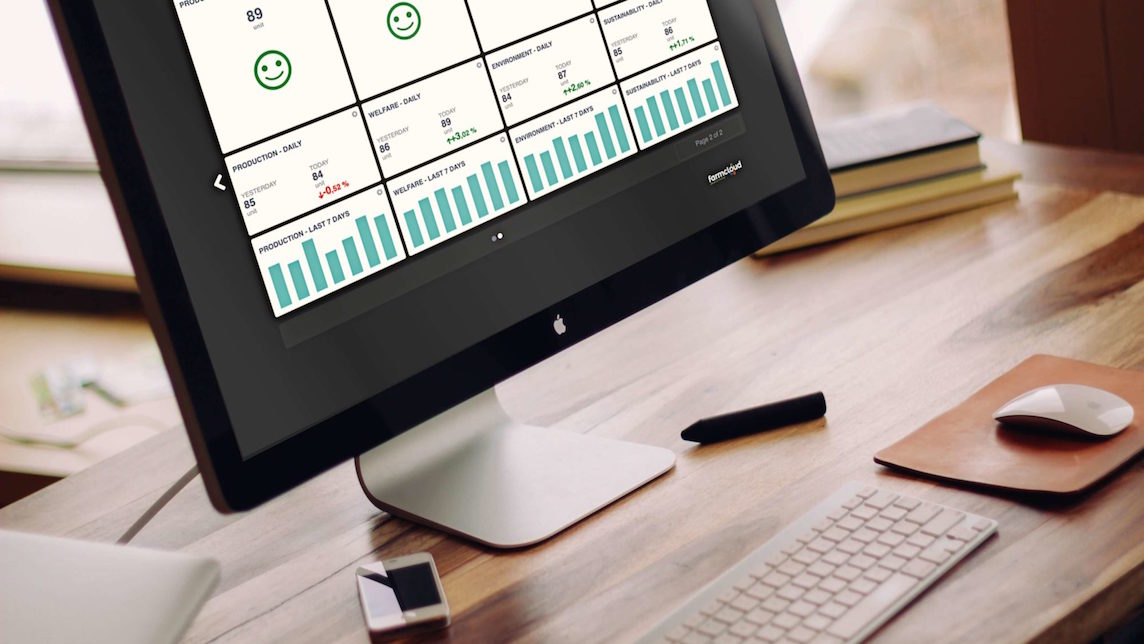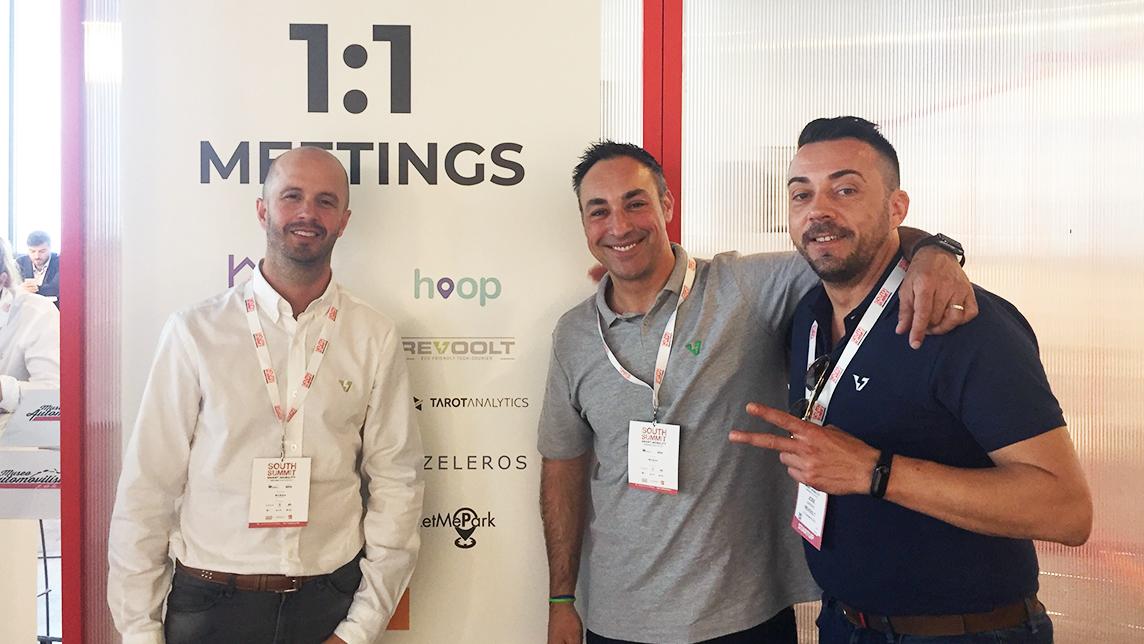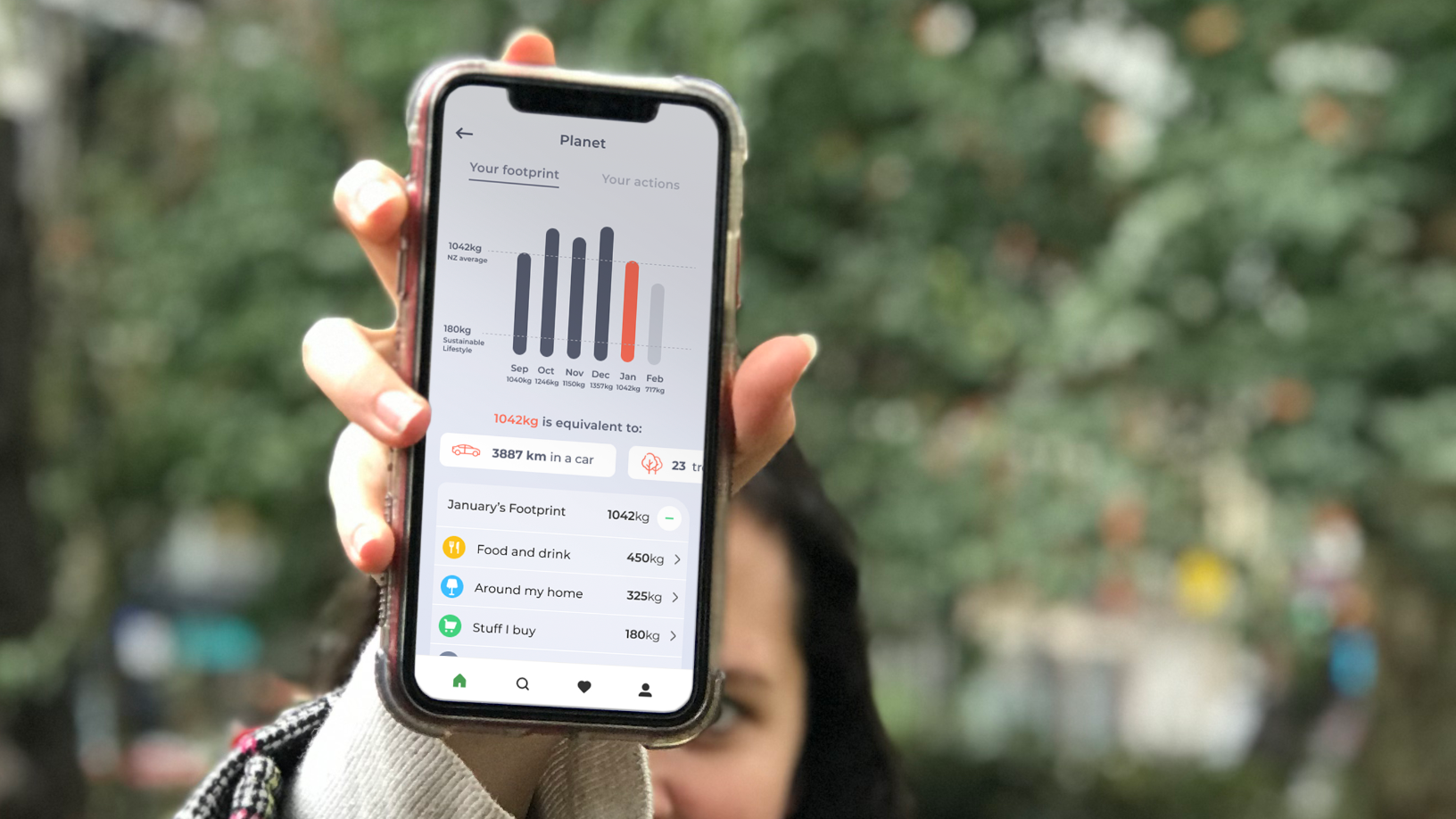Many people want to do their bit for the environment, but the founder of CO2 Revolution is using his own hard-earned cash to create a hi-tech method of re-planting entire forests in a matter of, literally, just hours. Juan Carlos Sesma urges all stakeholders to act by funding large-scale reforestation projects before it is too late, when the damage from deforestation and wildfires becomes irreversible.
CO2 Revolution uses data-driven drones to plant thousands of hectares of barren land with "intelligent" seeds. Named the Iseed, it is the brainchild and patented product of 35-year-old Sesma, who spent three years developing and testing the drone seed-planting system. The Iseed consists of self-sustaining pre-germinated seeds kept in protective casing or capsule. The Iseed concept and drone-planting process can be adapted to suit any type of degraded terrain and surface area.
Big data is collected and analyzed to plot the best combination of indigenous plant species for the soil conditions of targeted reforestation areas. The customized Iseeds are then planted or launched by drones. The drones will also be used to manage the creation of the new ecosystem until the seedlings have passed the crucial survival stage for each type of the species.
The CO2 Revolution system has already been proven successful in the replanting of a 1,200-hectare area of burnt forest in the Spanish province of Guadalajara that had remained devastated since 2012. In a matter of five hours, 100,000 new trees were planted at a fraction of the cost of manual methods. The average cost of the vast reforestation system can be as low as US$100 per hectare, compared with traditional manual planting methods costing around US$5,000 per hectare for common species.
CO2 Revolution is now negotiating major funding to expand in Europe next year. The company is already profitable and eyeing a revenue of US$1 billion within three years. Navarre-based Sesma, who is also company CEO, believes the Iseed system will be adopted in other parts of the world in the near future, as "a game changer" in the global fight against climate change.
Q: Your business proposal is, as its name suggests, truly revolutionary. How do you believe such an ambitious project is possible?
A: The idea arose from my own personal conviction that we can, and should, change the world. When I was working for an American company in Colombia and Panama, I had always focused on business process management in large companies, striving to save time and expenditure to produce better results.
It was the first time I had spent significant time working outside my home country, and that always changes the way you act and think a little: you reflect a bit and realize that what you have been doing up till now doesn't fulfil you, and you begin to question what you have known to date.
What was clear to me then and now is that I didn't just want to do some small-scale action to make myself feel better, which may be easily doable, but changes little in the bigger scheme of things. It really just serves to make yourself feel better, not really making the world a better place. So, I believe you have to go that one step further, to do something you believe in and are passionate about, but to focus on where you can really make a difference to make a global impact.
As I have always been all about optimizing business procedures, I thought, why don’t I put this knowledge into something really impactful and transcendental like climate change? That was how the idea of CO2 Revolution was born.
With no experience in biology or technology, how did you go about putting your intentions into practice?
By analyzing, step by step, all the elements involved in developing an ecosystem from start to finish. So, the first step is examining all the essential elements in an ecosystem like autochthonous species, types of soil, number of sunlight hours, quantity and timing of rain. We then need to combine all these elements to create the most complete and harmonized ecosystem possible, which you just can't do manually.
First, we will gather all this information using big data. Secondly, algorithms are used to optimize the data so that the findings can be used to design the most complete and sustainable ecosystem possible for the desired indigenous plant species. I had absolutely no idea about technology, seeds or drones because I am a business administrator by profession. But I knew how to combine all the essential ideas together to get the most effective procedures possible.
So, the first thing I did was to do my own investigations. Then I looked for experts in each specific area, such as biology, IT engineering and drones, to develop projects in tandem; either as part of my company or with collaborators. The IT engineering became an essential part of the company, while the drone and seed developers are our strategic business partners. We signed industrial and confidentiality agreements for every collaboration project.
The whole project depends on "intelligent" seeds. What are they and where did they come from?
The Iseed is something that didn't exist before, so we have now patented it.
I observed that each time a tree is planted, you need a sapling of about 20–50 cm, then dig a hole and plant it. I just didn't get this because it costs a lot of money and effort to transport the saplings, and then luck to plant them successfully. So, I thought about making the process 1,000 times faster, cheaper and more effective at the same time.
So, where do I begin? With the seed, everything starts with the seed. What does it need? To be pre-germinated and protected and to have all the elements it will need once it's outside. Firstly, it must not be eaten, so we need to add some kind of repellent so that it isn't consumed by parasites, birds or animals, and they will leave it alone.
Secondly, it needs organic fertilizer, then amino acids and minerals, and lastly, the most primordial, water. We won't be able to personally water the plants so we need to ensure that each sapling is not hydraulically stressed. Therefore, we add an element called absorbent polymers that have a component a bit like babies' diapers ensuring expansion with water up to 500 times the original size. Once we have all these components in the right quantities, we just add the seed into the capsule where it will have everything it needs to survive and grow. Then, you just launch it and let it grow.
The rate of growing roots is far higher for this transplanted seed than an uprooted and replanted sapling that will have been transported to a new area with a different soil. With the Iseed, it already germinates there and grows its roots in the same soil. So, the rooting rate is 80%, far higher than manually transplanted saplings and the cost is far, far less. As for the seed shells, we currently have 20 types of biodegradable seed shells to serve different types of plants and habitats.
It simply makes no sense to keep on using completely manual methods to fight climate change when we now have more efficient tools and technology that allow us to do otherwise. It's as crazy as if people had continued doing things manually after the Industrial Revolution.
The Iseed idea took three years to develop, from when I came back from Colombia to about 18 months ago when it was finished. I did my own investigations and consulted experts who have been using seeds for decades.
I'm from the north of Navarre, where my dad is a good friend of the friar of an ancient monastery near my village. The friar is in charge of maintaining the monastery’s plantation with a greenhouse that he had been tending for 60 years to germinate fruit, almond and nut trees for the orchard. And I thought, if he's been doing this for 60 years, there is a reason. So, I told him about the idea and we started making the first seeds in 2015.
In fact, the logo of CO2 Revolution was designed in honor of the monastery. It is a blue circle representing the world, with a lightbulb for innovation and a tree. Not just any tree. The Virgen of the Olives tree has represented this monastery for 900 years, and this tree is supported by a bishop's staff in the logo.
Can you tell us about the use of environmental data in the process?
Via satellite, Spain has readily available information on the autochthonous species, sunlight hours, soil types and rainfall. So, what do we add to the data? Besides the planting drones, we also have reconnaissance drones that not only visualize the terrain but also carry thermographic cameras to analyze the terrain and identify areas that lack vegetation. Then, we use the thermographic cameras to check the soil temperature and map it. The colder the soil, the greater the chance of a germinated seed. Then, taking the soil temperature into account, we create the best seed combinations to use, not only for trees but also for bushes, flowers and shrubs.
How has your system's efficacy been proven?
We believe that CO2 Revolution can repopulate an entire ecosystem in a more sustainable way. Moreover, it has been proven in the Natural Park of the Alto Tajo which suffered massive deforestation from fire. This was the first real trial of a vast reforestation system anywhere. We launched 11 different types of seeds that were selected using big data and approved by the [Spanish] Ministry of the Environment. All the plants selected were indigenous to the area including three types of trees and three types of bushes and flowers. There were two other essential elements needed: water and bees.
Therefore, we made an agreement with an association that protects bees and we installed panels covered with bees in the ecosystem to help pollinate the area. Also, using big data, we traced the water basins and, using dykes, we also created a water reserve for future use. How are all these maintained?
Our ecosystem is designed to be sustainable for at least two years, if we use autochthonous species, and ones which are compatible with one other and the environment. The plants are maintained until they reach a critical size, in accordance with the Ministry of the Environment that audits the area and allows us to control the project under an agreement to keep the ecosystem in place for at least three years. Once the land has been maintained for three years, we will have the right to start using it and it becomes sustainable. As for the protective outer seed shells, we have 20 types of biodegradable seeds to serve different types of plants and habitats.
Are there any plants unsuited to your system?
So far, we have only found one type of seed that can't be used. The Savine seeds have to pass through a digestive system to be germinated, so it is an isolated case and apart from that, almost all plants can be used. Our drones have a dispensary system whereby they are equipped to vegetate an area of 10 meters each time – five to the right and five to the left at 10 meters per second. So, in one hour they can plant an area the size of a football field. For heavily eroded areas, the quicker you use a system like this, the sooner the soil will become fixed and less prone to erosion.
Can you tell us about your level of financing thus far?
The total investment for the last three years was €150,000, all of which was self-funded. I have contemplated seeking public funding, but in Spain, the bureaucracy is extremely slow and so if I opted for funding it would slow down the whole project and I can't let this happen. So, I carried on working during the three years in the executive post I had before. This job allowed me to self-finance CO2 Revolution through savings by living frugally. All my money was invested in the startup.
Now, we're are at the stage where the technology has been proven to work. So, what we are looking for now is not just Spanish or European financing, but funding on a global scale. So, we are looking at €20 million for the first funding round for EU expansion. But to go worldwide, we need €100 million.
We are now in discussions with venture capital funds, as well as with several national sovereign funds to get more substantial funding. We hope to complete a round in the coming weeks, either with sovereign funds or VC funding from Spain or the US. Most of the interest is from overseas including some very well-known names.
It seems crazy but we know that if you want to get something you need to give something in return. So, we used our own funds to tackle the worst fire damage in the last 20 years in Spain. Explaining our plans to the local authorities and the Ministry of the Environment has ensured that we were the startup that received the biggest media coverage in the first year of its life. All the national TV stations, newspapers and radios have given us coverage. We hadn't even looked for investors or customers, but with all this coverage they have come to us.
What is your business model?
A good idea to change the world is not enough. It must also be profitable. We were already profitable in the first year. Our plan is to have a revenue of US$1 billion within three years. Next year, we aim to generate €100 million.
We can roll this business out anywhere in the world, operating three lines of business from least to the most lucrative. Firstly, reforestation after fires. Every year, millions of hectares are lost to forest fires and this is the only solution to that problem. Just in that market, we are talking about thousands of millions of euros. The second is the use of intelligent seeds and drones in agriculture. At the moment, we still use expensive machinery which can only enter accessible areas with easy terrain and large open spaces. So, the use of Iseeds and drones could literally mean an agricultural revolution.
The third market is the emissions trading market. The EU market alone is worth US$30 billion, so it is possible to make €100 million next year by clinching 3% of that market. We are literally on the cusp of being pioneers to change the world on a large-scale. Emissions trading is already decided price-wise by the markets according to demand and supply, and it changes on a day-to-day basis. The World Economic Forum has a video about how reforestation is done across the world by an army of people planting manually. If they are the ones advocating for change, well you can imagine the inefficiency of such a process. That won't change the world!
Are environmental NGOs interested in working with you?
No, and that is one of the things that makes me most upset. Firstly, I want to make it clear that I really want to work with NGOs and offer them my technology. But not one has got in touch with us at all. Why? Unfortunately, I think it all boils down to economics. NGOs do the replanting of forests by hand, and out of the carbon trading market. So, I really don't understand how, if you want to have a better world, you can't consider doing projects on a large scale that is far more cost-effective. I really think they see us as a competitor, leaving them out of the marketplace. But if we all want to create a better world, we have to work together. We have offered our technology free to several NGOs, but not one has come back to us.
Who will your customers ultimately be?
Any large company that is obliged to buy carbon credits, or any government which needs to reforest from fire damage, for example, California after all the wildfires this year. Imagine that after only six months, we could replant all the vegetation lost in those fires, and eventually also those lost across the whole of the US in the last few decades. So, big US funds are potential target customers. If we really want to change the world we can't do it alone, we need more people to invest in the projects.
What are the approximate costs of replanting a hectare, for example?
We can reforest a hectare of land in five minutes by launching more than 3,000 seeds which, in many cases, can only cost €100 but it all depends on the species. The smaller the seeds and the easier to source them, the cheaper it is. The costs go down if you replant 1,000 hectares as opposed to just one hectare. So, the costs range from €100–€500 per hectare depending on the area to be covered.
We have 1,000 drones of our own, but the problem is the number of batteries and their duration. One drone can replant 100 hectares a day but it has to be recharged. Our drones can usually can last only one hour in the sky, which is already good but it takes 1.5 hours to recharge. The most effective are the drones that can switch their own battery supplies themselves while they are still in the sky. You don't need 1,000 drones, you could change Europe with just 10, and the world with just 50. But only by having ones that are productive enough.
How much maintenance is required in a treated area?
The components in the Iseed capsules are all the seeds need until they become seedlings which is the most critical phase. A common tree like a pine or almond generally reaches this stage at around 30 cm. Once it gets there, there is a more than 90% chance that it will survive as its roots have developed enough to find water and nutrients independently.
With the money from each project like carbon trading, we can manage the replanted area for two years by using drones for watering and fertilizing. We can sign contracts to maintain the ecosystem for the two years to enable it to reach self-sustainability. No further input is required after the seedling stage in tropical areas as these plants will have a ready supply of water, good soil, etc.
Where do you most see a need for CO2 Revolution to act?
We have to use it immediately in tropical areas in order to make a difference in climate change there because it’s where the plant cover grows most and it’s also where many forest areas are being destroyed. So, we've got to go to the devastated areas to plant tens of millions of trees using this very economical system. But we have to do it with an economic plan because as lovely as it sounds, these countries need economic incentives for vast reforestation schemes.
Developed countries cannot just demand that Equatorial countries, that are generally developing nations, to do it alone. So, it’s got to be done free for them and also made economically viable in terms of providing more food security. When you make it more about food security, you are more likely to encourage the protection of these forests. However, to really make it work we need the investment of millions and millions of euros. The only way we can get that is by incentivizing the take-up of carbon trading agreements.
The Kyoto Protocol establishes the limits that large corporations are allowed to pollute and above that, the companies have pay a penalty or pay for it in terms of creating new ecosystems. This process must continue to ensure that corporate carbon footprints are compensated for by forest cover and not by paying extra taxes. We have to emphasize that it is far more productive to create forest cover than to destroy it. We also have the facts relating to creating productive areas for food and carbon credits. The EU is using this method, but it's been really harmful that the US has left the agreement, a complete disaster.
Do you have any other revolutionary business ideas?
I refuse to believe that we are on this earth simply as a freak accident: we are here not just to live life but to make the world a better place and we have to be ambitious. CO2 Revolution is just the first of five projects I have planned and named "One billion people." The projects, that will change the lives of one billion people, are all easy to implement and very scalable to produce immediate results.
I wasn't satisfied with the things I had already achieved and started seeing things in a different way, wanting to do something to help the most number of people in the shortest time possible. Climate change is the first because our way of life, as we know it, will have changed irreversibly in less than 40 years from now. Future projects could include access to water, energy an self-sustainability. The second plan will be scalable, immediate, cheap and also benefit the greatest number of people possible. However, I can't tell you what it is right now!
